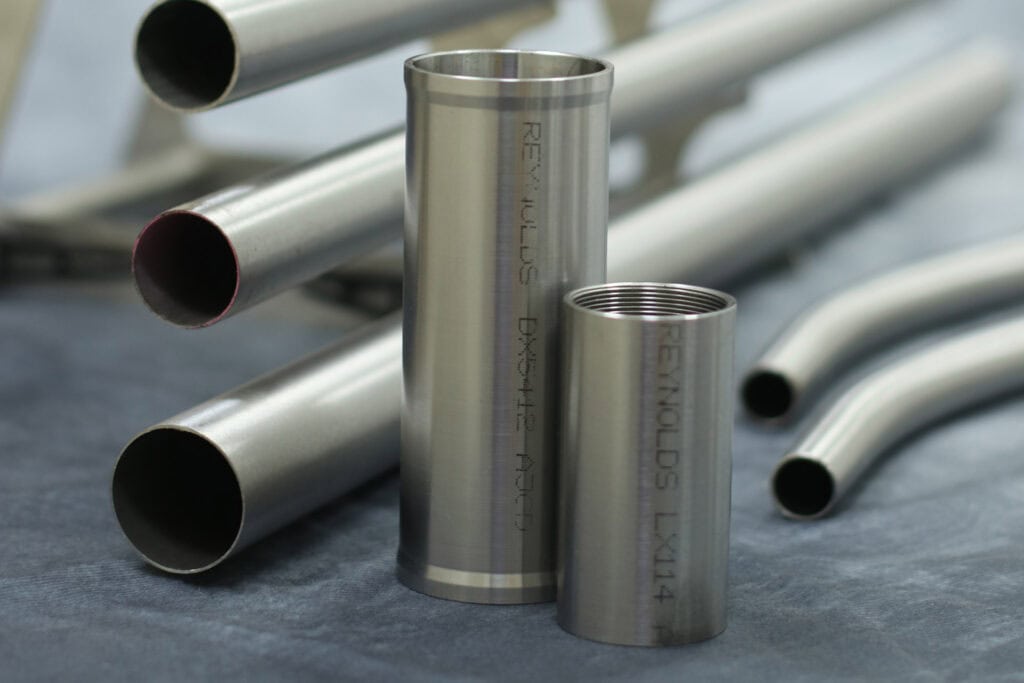When steel bikes got kicked off the podium in favor of more advanced frame materials, it seemed to foreshadow a decline for the frame material. Not so, as evidenced by the rise in sales from around 2015 to 2021. Now, steel is again gaining fans for more than just reliability. Since it’s 100 percent recyclable, this ancient material is already sustainable. These days, bikepacking and consumer demand for a more sustainable bicycle frame are why steel still has appeal.

“Ten years ago, we started getting questions from our customers about how much of our steel tubing comes from recycled raw materials?” said Keith Noronha, managing director of Reynolds Technology, a leading supplier of steel tubing.
Steel frames have a lower CO2e footprint
That question hadn’t come up much in the more than 125 years since the firm was founded, so the company didn’t have an immediate answer. Reynolds conducted its own environmental impact study, which was published in July of 2022. Among other revelations in the report, manufacturing a conventional diamond frame from stainless steel adds 59.44 kg. of carbon dioxide equivalent (CO2e) to the atmosphere compared to 17.20 kg. for the same frame made from ferrous steel. The report pointed out that steel frames are inherently durable, long lived, easily repairable, and straightforward to recycle at end of life. The global business of steel dates back decades — if not centuries — and has a robust infrastructure oriented around melting, extracting the various components of each alloy, and creating new alloys formulated for specific purposes, like bicycle frame tubes. That means, says Noronha, that your steel bike frame could have elements of knights’ armor from the Middle Ages. And why not? Because all of Reynolds’s steel comes from 100 percent recycled material.
Loyal fans of steel will credit its sensational feel more than its sustainability as the reason for their loyalty. Ritchey has figured out how to build characteristics like springyness, elasticity, and “liveliness” into its brand of steel frames and forks. Ritchey’s newest bike, the Montebello, has been built with proprietary triple-butted Logic steel tubing and features the longer wheelbase, lower bottom bracket, and increased stack favored by randonneur riders. Specifically for this class of day/night cyclist, the Montebello has internal Dynamo routing in its WCS Carbon Brevet fork. Suggested retail price for the Montebello is €1,699, including VAT.
Certain cyclists will always prefer steel frames
Some prefer steel bikes for their artisan craftsmanship. Relative newcomer, Bixxis, opened in 2015 with a clearly stated intention to bring back a taste for well-made bikes that exquisitely straddle the line between tradition and innovation. Each Bixxis frame is 100 percent handmade in Italy at the company’s workshop a few miles north of Milan. Given that each bike is unique to its owner, Bixxis has to at least give potential customers an idea of their future bike. To highlight good taste in bikes as well as stay current with modern trends, Bixxis is introducing the new Prima Disk steel bike. This model was created to meet the needs of those who want a contemporary product with the craftsmanship and tailormade ethos of Bixxis. The Prima Disk is available with standard or sloped geometry and accommodates a Futura disc SLX Columbus fork that can fit tires up to 30mm.
Steel bikes remain cherished because, unlike some other things in life, steel rarely lets a rider down. Steel’s versatility, durability, comfort, and eco-friendliness, and the fact that the craftsmanship of steel bikes can still leave some people speechless, is why certain cyclists “steel” prefer steel.


